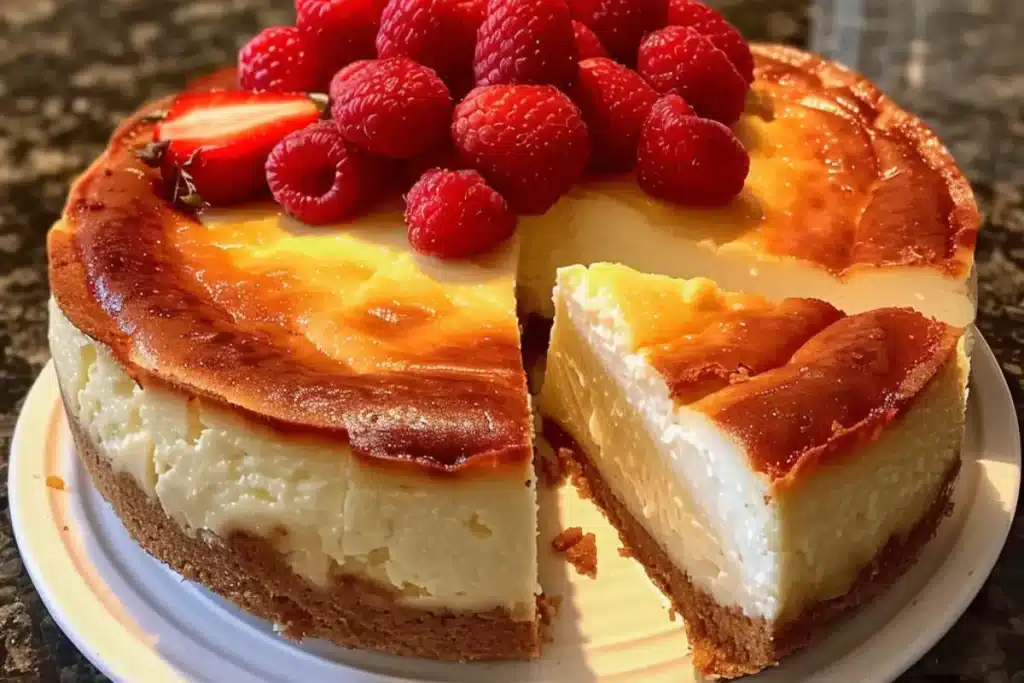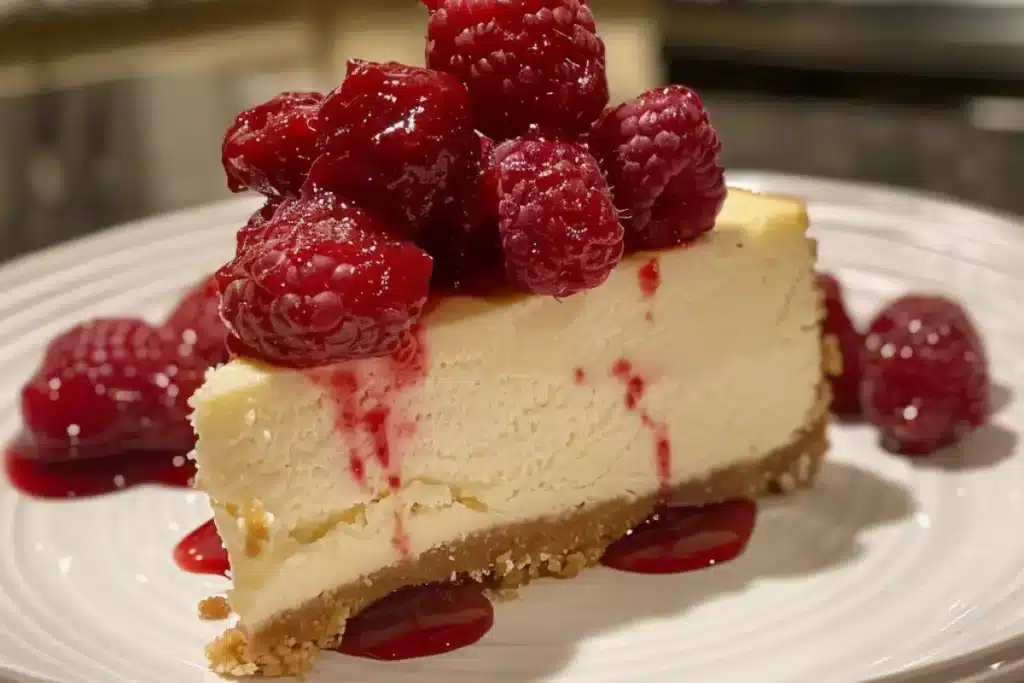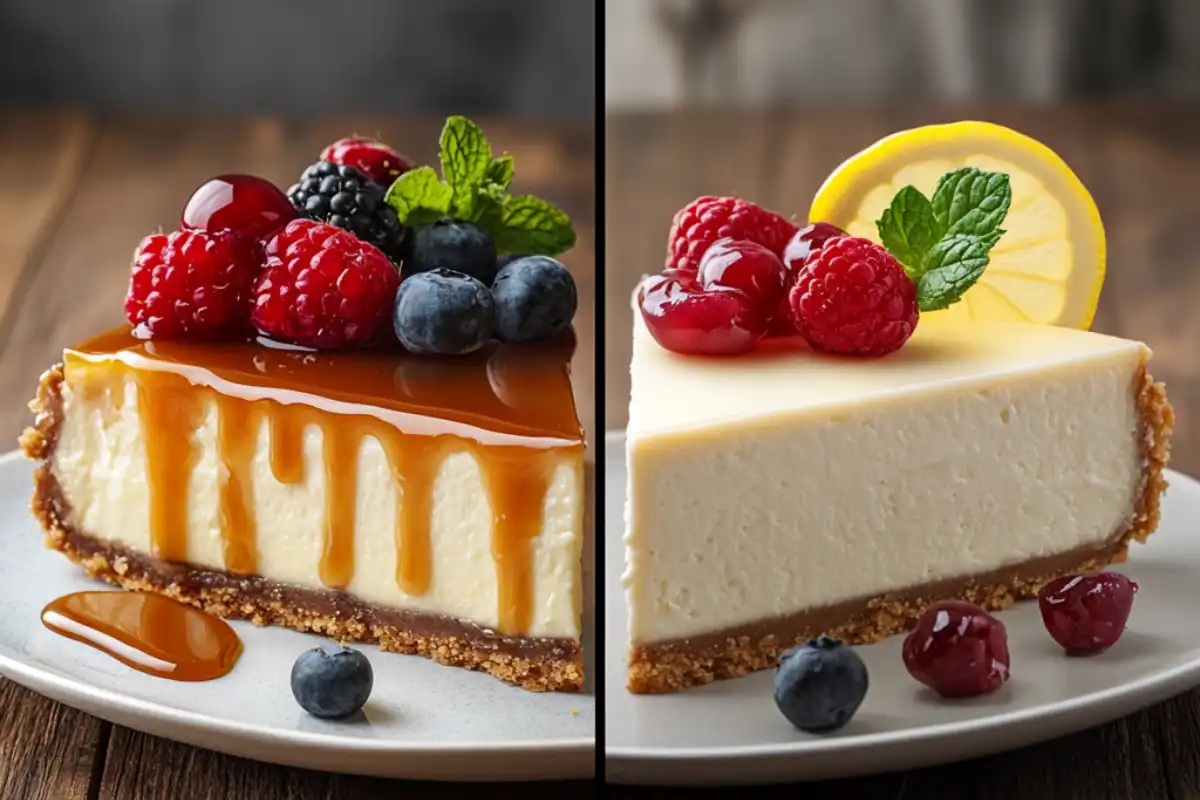Cheesecake is a universally cherished dessert, but when it comes to deciding between no-bake and baked cheesecake, the choice isn’t always easy. Both types have unique characteristics that cater to different tastes and preferences. This guide explores key differences between the two, helping you determine the best option for your next dessert adventure.
Table of Contents
Introduction to Cheesecake Variations🧀
Cheesecake has a long history, dating back to ancient Greece. Over time, it has evolved into various styles, the most notable being baked and no-bake cheesecakes. Whether you prefer the traditional, dense richness of a baked cheesecake or the light, airy texture of a no-bake version, understanding their differences is key to mastering this beloved dessert.
Each type offers unique textures, flavors, and preparation methods. The decision often comes down to personal preference and the occasion. If you’re curious about the intricacies of each type, learning how to make a perfect cheesecake is a great place to start!
🍰 What is Regular (Baked) Cheesecake?

Regular cheesecake, commonly known as baked cheesecake, is the traditional version of this dessert. It involves baking a mixture of cream cheese, sugar, eggs, and heavy cream, resulting in a dense, rich texture. While this method requires more time and precision, the results are often rewarding.
Key Ingredients & Preparation Process
- Cream cheese: The base ingredient, providing a rich, creamy texture.
- Sugar: Sweetens the cheesecake and balances the tanginess.
- Eggs: Bind ingredients together, giving structure and density.
- Heavy cream or sour cream: Adds richness and smoothness.
- Vanilla extract: Enhances the flavor.
How it’s made: The ingredients are mixed until smooth, poured into a crust (typically graham crackers), and baked—often in a water bath to prevent cracking.
For more insights, check out Science of Cheesecake Baking guide!
Texture & Flavor Profile
- Texture: Dense, firm, and holds its shape well.
- Flavor: Deep, rich, and slightly tangy, complemented by the sweetness of sugar and vanilla.
Baked cheesecakes can be enjoyed plain or topped with fruits, chocolate, or caramel. If you enjoy indulgent desserts, you might love this Strawberry Crunch Poke Cake recipe!
🍓 What is No-Bake Cheesecake?

No-bake cheesecake is a simpler, quicker alternative to the baked version. Instead of baking, this cheesecake sets in the refrigerator, creating a lighter, mousse-like texture.
Key Ingredients & Preparation Process
- Cream cheese: The base ingredient, providing a creamy texture.
- Sugar: Sweetens the cheesecake.
- Whipped cream or gelatin: Helps the cheesecake set without baking.
- Vanilla extract: Adds flavor.
How it’s made: The ingredients are mixed and poured into a graham cracker crust, then refrigerated for several hours until set.
For a delicious variation, try this No-Bake Cherry Cheesecake recipe!
Texture & Flavor Profile
- Texture: Light, airy, and mousse-like.
- Flavor: Fresh, creamy, and slightly tangy, but with a softer mouthfeel.
This cheesecake is perfect for warm weather or when you need a quick, no-fuss dessert.
⚖️ Core Differences Between No-Bake and Baked Cheesecake
| Feature | Baked Cheesecake | No-Bake Cheesecake |
|---|---|---|
| Ingredients | Uses eggs & heavy cream | Uses whipped cream or gelatin |
| Preparation | Requires baking & cooling | Requires refrigeration |
| Texture | Dense & firm | Light & mousse-like |
| Flavor | Deep, rich, and tangy | Fresh, creamy, and airy |
| Best for | Special occasions, holidays | Quick, easy summer desserts |
🎉 No-Bake and Baked Cheesecake : Practical Considerations
Time & Effort
- Baked Cheesecake: Requires baking and cooling, taking several hours.
- No-Bake Cheesecake: Quick and easy, but needs refrigeration to set.
Ideal Occasions
- Baked Cheesecake: Perfect for holidays & special events.
- No-Bake Cheesecake: Great for summer gatherings & quick desserts.
🥄 Nutritional Comparison
The nutritional content varies based on ingredients and preparation methods.
Caloric Differences
- Baked Cheesecake: Higher in calories due to eggs and heavy cream.
- No-Bake Cheesecake: Can be lower in calories, especially with lighter ingredients like Greek yogurt.
Healthier Options
- Use Greek yogurt instead of heavy cream for added protein.
- Opt for reduced-fat cream cheese for lower fat content.
- Substitute sugar with a natural sweetener like Stevia.
Looking for an easy cheesecake alternative? Try this Churro Cheesecake Recipe!
👩🍳 Expert Opinions & Consumer Preferences
Professional Chefs’ Perspectives
Many chefs prefer baked cheesecake for its depth of flavor and texture. The baking process allows for greater control over consistency and structure.
Consumer Preferences
Surveys show that preferences are divided:
- Some favor baked cheesecake for its traditional, indulgent taste.
- Others enjoy no-bake cheesecake for its convenience and versatility.
Common Myths & Misconceptions
❌ Myth: No-bake cheesecakes lack flavor.
✅ Fact: They can be just as flavorful, depending on ingredients.
❌ Myth: Baked cheesecakes are always harder to make.
✅ Fact: With the right guidance, they can be simple!
❌ Myth: No-bake cheesecakes are always healthier.
✅ Fact: Healthiness depends on ingredients, not baking method.
Both baked and no-bake cheesecakes have unique qualities. The best choice depends on your personal preference and occasion:
- Baked Cheesecake: Rich, indulgent, and traditional.
- No-Bake Cheesecake: Light, quick, and easy to prepare.
No matter which you choose, both versions offer delicious and satisfying experiences! Whether preparing for a special occasion or craving a sweet treat, knowing these differences will help you create the perfect cheesecake every time! 🍰✨
❓ FAQs
Can you substitute one type for the other?
- Not easily. They have different textures and setting methods.
Which cheesecake is healthier?
- No-bake versions can be lower in calories, but it depends on the ingredients used.
How long can each type be stored?
- Baked Cheesecake: Up to 1 week in the fridge, or 3 months frozen.
- No-Bake Cheesecake: Best within 3-5 days, as the texture can degrade.
Can you freeze no-bake cheesecake?
- Yes, but the texture may change slightly. Freeze without toppings and add them fresh before serving.
Why does my baked cheesecake crack?
- Cracks can result from overmixing, high oven temperatures, or skipping a water bath.

